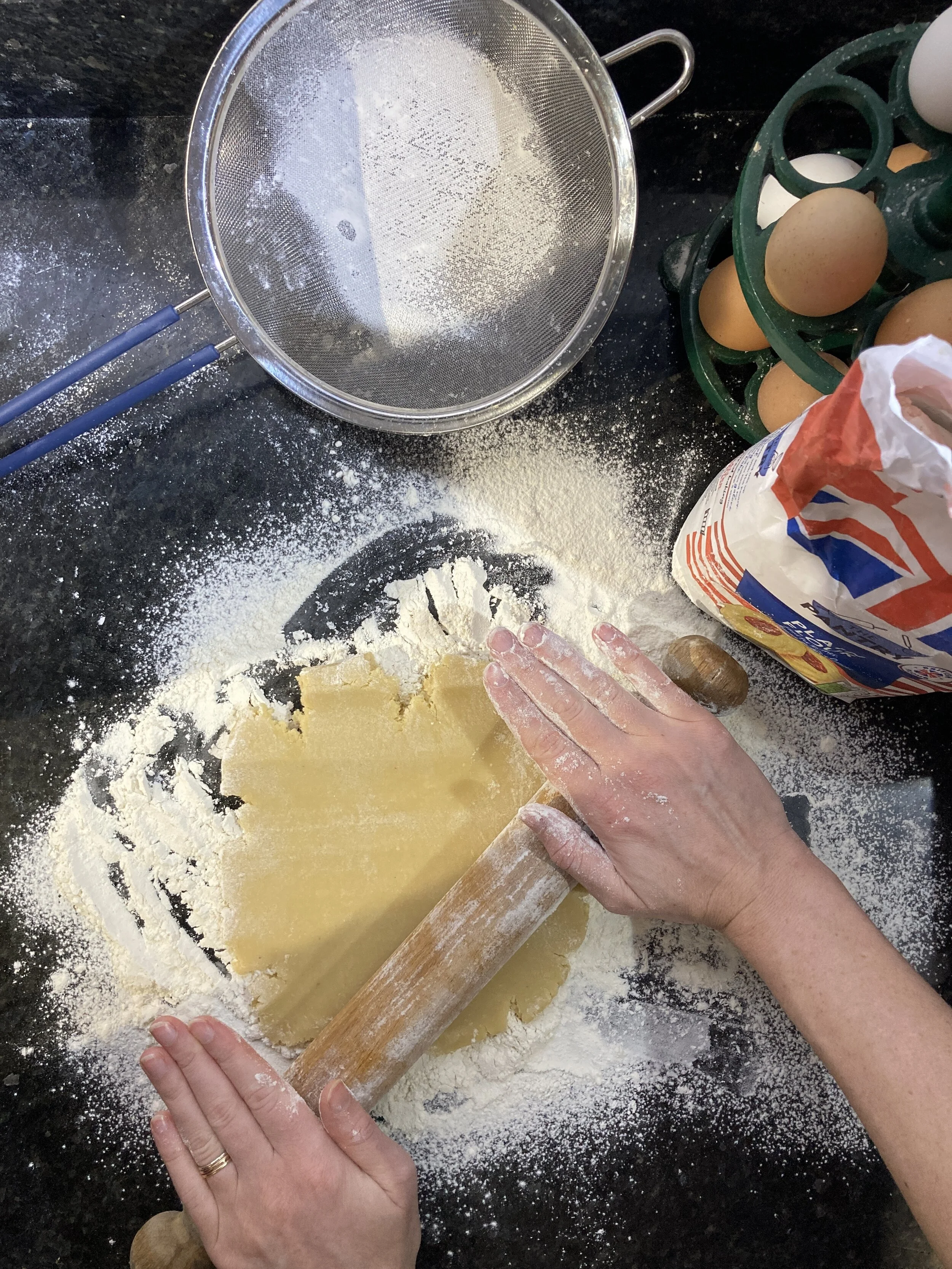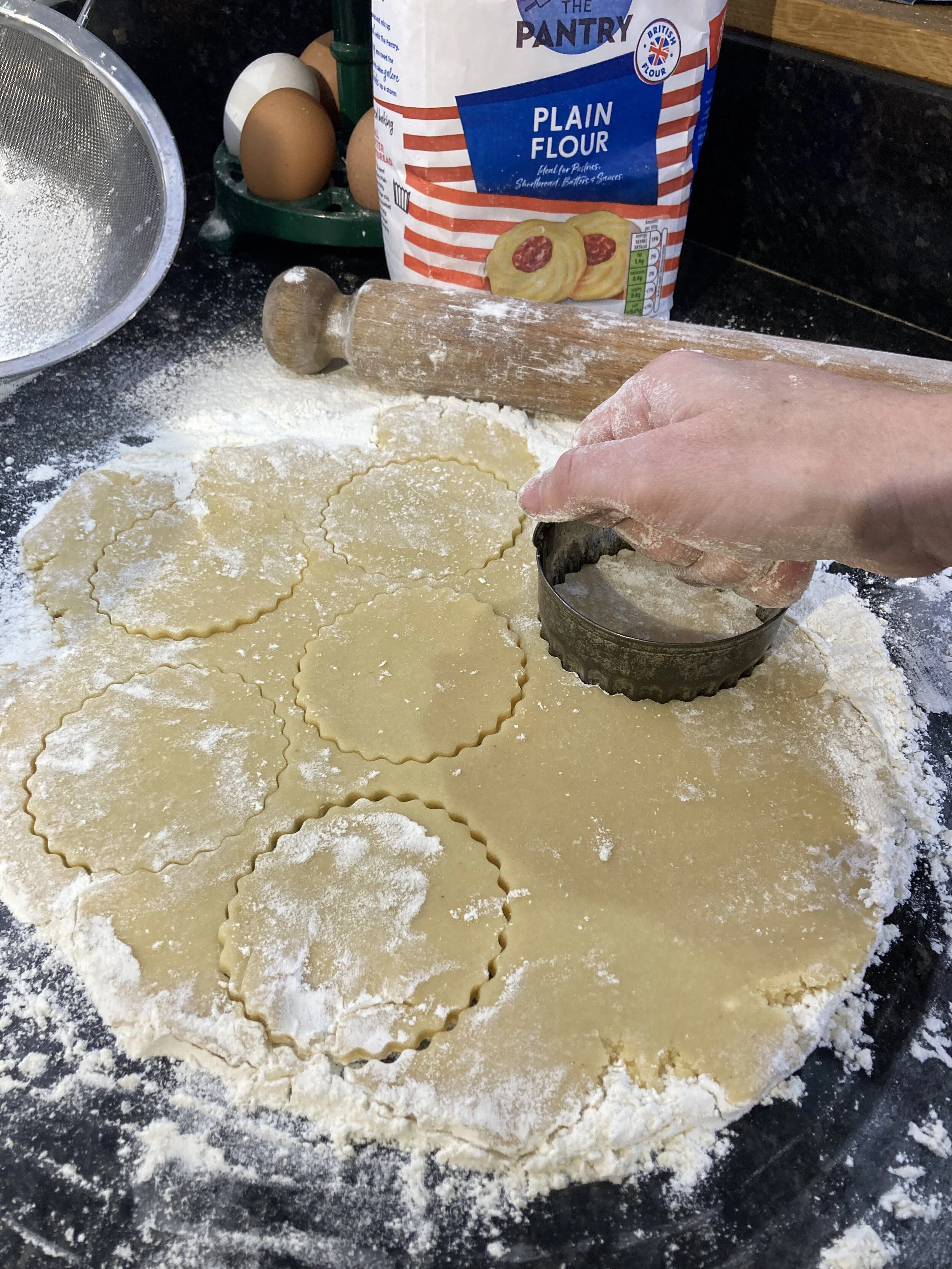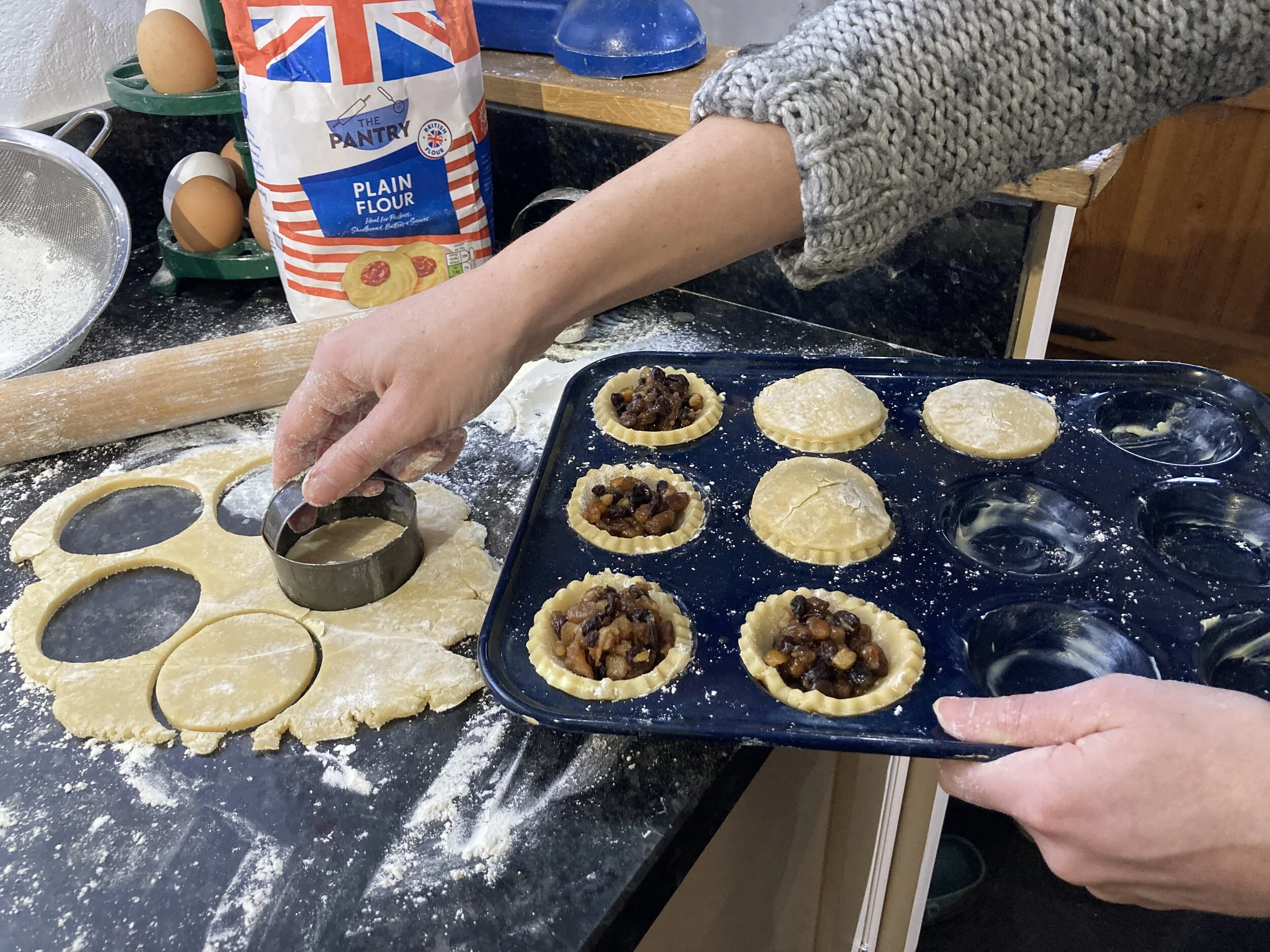Food Fun
Mince Pies & Other Pastry.
Many children with severe, complex and profound special educational needs may experience feeding challenges. For some, this might be because of Dysphagia (physical difficulties that make it unsafe to swallow) or because of sensory challenges which make it an unpleasant and difficult experience. Whenever offering food related play, please ensure that you discuss it with the child’s dysphagia trained Speech and Language Therapist to make sure that it is safe for a child to do so and take into account any dietary requirements.
Play is a useful tool to improve a pupil’s relationship with food. Playfully interacting whilst engaging in a cooking activity can reduce demands to eat and allow opportunities to model interacting with a range of different tastes, textures and smells in a fun and playful way.
During the festive period, making mince pies is an excellent multi-sensory play activity from shaking the flour to rubbing in the butter, rolling out the dough, cutting the shapes and filling with goodness.
Outside of the festive season, do not be afraid to repeat the activity - fill the pastry with jam, roll it with cheese or just cut out shapes. Making scones and gingerbread biscuits will provide similar playful sensory food activities.
Three simple ingredients.
Rubbing together butter, flour and eggs will make a pastry dough. If you are worried about pupils playing and interacting with raw egg, replace it with water. It is the process that is important not the product!
Capture Attention.
Flour is a dry sensory ingredient and most pupils with sensory feeding challenges find flour less threatening because it is dry and can quickly and easily be wiped off if it gets onto hands.
Sieving flour from a height creates a fabulous visual effect as it falls. Shake flour from a height to entice over those pupils more reluctant to take part. Start and stop the shaking and observe if the pupils requests for “more” or for the activity to continue.
Play in different ways.
It is the process not the product.
Use your knowledge of what your pupils like to interact in a way that is motivating for them. Flour creates a great surface for mark making, or even building flour castles to crash down. Be creative in how you play and interact with the flour and other ingredients!
Exaggerate.
Shaking flour from a height appeals to so many different pupils. Give it a go and see how they respond! Does it attract their attention?
Make a mess.
Pupils who find feeding challenging often dislike tactile (touch) experiences. Be prepared to make a mess and to show pupils that it is ok to be messy. BUT also show them how to cope with being messy - for example by having flannels available to wipe hands.
Be prepared to change the environment in response to a pupil to facilitate their engagement. It might be too challenging for them to cope with that much messy flour on the table but they maybe interested in the pastry dough. Wipe away the flour to reduce the challenge and support them to engage.
Interacting with food using utensils (such as a rolling pin, spoon or cutter) is progress towards interacting with food by touching it with a finger. Celebrate and record the small successes!
Learning Opportunities.
During cooking activities, our intention is not to teach pupils to cook. Cooking activities provides pupils will the opportunity to show evidence for learning in all of the core curriculum areas of cognition, communication, physical and sensory and personal, social and emotional development, depending on their personal learning journeys.
Evidence for Learning.
During the activity of making mince pies, pupils might show evidence for learning, for example by:
Tolerating fully supported food exploration.
Responding differently to wet and dry tactile experiences.
Smelling food.
Using hands to smear food.
Opening mouth for spoon.
Requesting for more of preferred food.
Bringing food to mouth.
Engaging in food related play.
Examples taken from The Springboard Curriculum: Assessment Framework. PSED, Inner to Outer Learning Circles.
Evidence for Learning.
Turning head or eyes towards visual stimuli.
Communicates for interactions to continue.
Has a consistent way of making a choice.
Looks or reaches towards photos, pictures or symbols to communicate for different purposes.
Focuses attention for up to 20 minutes at a time.
Examples taken from The Springboard Curriculum: Assessment Framework. Communication, Inner to Outer Learning Circles.
Evidence for Learning.
Grasping objects placed in palm.
Briefly moving hands or feet when in contact with a substance, toy or material.
Tracks moving objects.
Independently moves to a play activity and briefly engages.
Pours from one container to another.
Points to objects as they count.
Examples taken from The Springboard Curriculum: Assessment Framework. Cognition, Inner to Outer Learning Circles.
The process not the product.
Whenever we are having food fun, the idea is for pupils to get involved at every stage of the process. As with any playful interaction, educators must follow the lead of the pupils and respond and interact in a way that will enhance their learning. This will not necessarily equate to perfect pastry but that is ok! Cheat and buy some ready rolled pastry so that you can roll, cut, fill and taste what you have made.
If you are enjoying our content, The Springboard Curriculum is available to buy here as an immediate digital download. You can follow the link to view sample pages before you buy. The reason we decided to share our work? To allow educators to use their time creatively to maximise play and tailor the learning activities to the strengths and challenges of each pupil.
£1 of every sale goes to the school’s charity to give back to the educators and pupils who inspired the curriculum.









